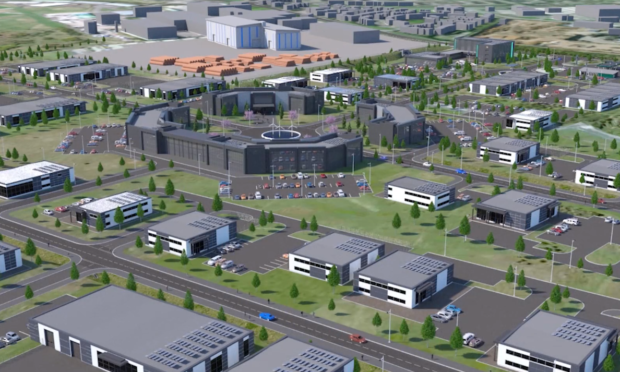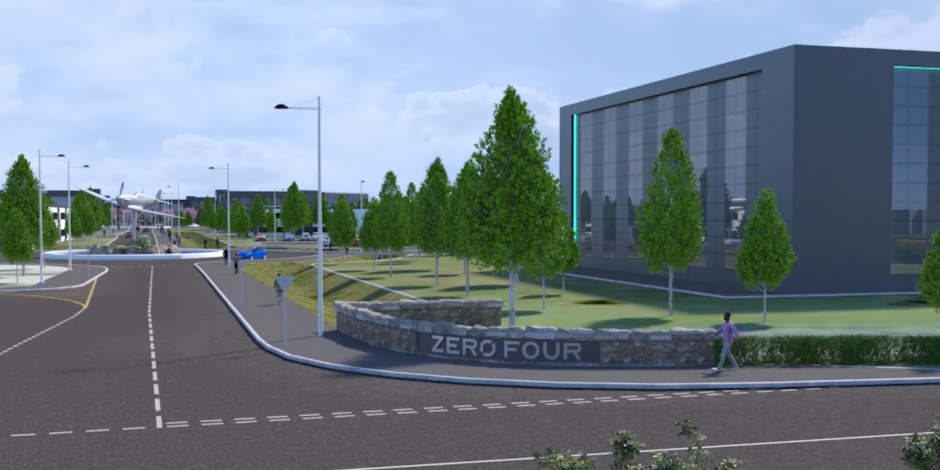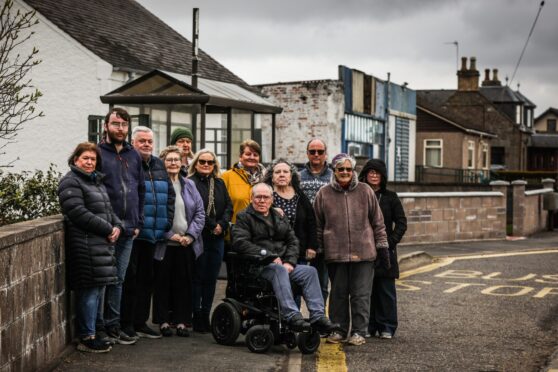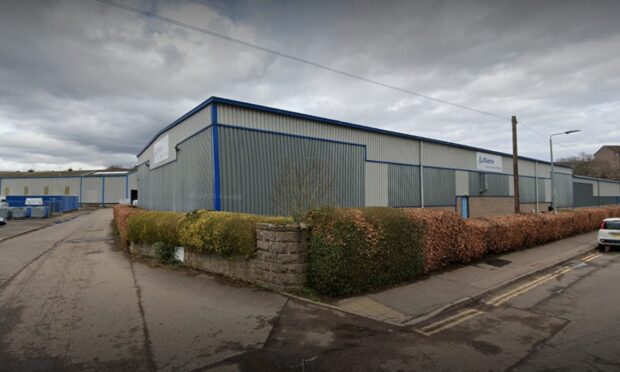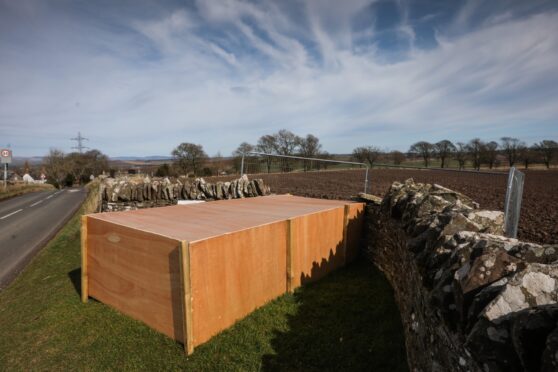Ambitious plans have been revealed for a £500 million Montrose development which could bring 2,000 new jobs to Angus.
The renewables sector is at the heart of the Zero Four site – taking its name from the runway of Britain’s first operational military airfield on which it sits – with a 130-bed hotel, retail park and commercial heliport included in the scheme.
Planning permission already exists for a mixed use business park and it has now been announced Crown Estate Scotland has acquired the site from Aberdeen-based Isla Developments for £3.7m.
The public body – which manages Scotland’s seabed and just under half the foreshore – said the deal forms part of the organisation’s long-term plans to invest in renewable energy and expansion of the blue economy.
Andy Wells, director of property for Crown Estate Scotland, said: “The site holds a great deal of potential and will allow us to build on the strong partnerships we already have in the marine energy and ports sectors.
“This would be good news at any time, but is especially welcome now as we look to kick-start economic recovery following the response to the Covid-19 pandemic, this offers a fantastic chance to bring major investment to Montrose and the wider north east region.”
The site sits adjacent to the existing Broomfield and Forties Road industrial estates, and will have a direct link to the £31m centre of excellence created by energy firm Baker Hughes which brought 160 jobs to the Angus town.
Cabinet Secretary for the Environment, Climate Change and Land Reform, Roseanna Cunningham MSP, said: “The Scottish Government is committed to ending Scotland’s contribution to climate change and securing a sustainable future.
“Crown Estate Scotland’s purchase of the Montrose Zero Four project exemplifies that focus, marking a further major investment that will contribute to long term, sustainable economic development for generations to come and help support a green recovery from the Covid-19 pandemic.”
Isla Developments project director, Kenny Clubb added: “Following purchase of the site in 2018, we immediately recognised the strategic role that the offshore wind sector would play for the region.
“Working with major stakeholders and existing employers already investing heavily in Montrose, including a very forward thinking Montrose Port Authority, the future is well set for the region.”
Mr Clubb added: “Having developed the enormous potential of Zero Four with Angus Council through involvement with the Tay Cities Region Deal, the Mercury Programme and One Public Estate Montrose, we are delighted to have concluded the sale to Crown Estate Scotland.
“By handing the development reins over to them it positions the project and the whole region extremely well in terms of a solid and consistent approach between the offshore and onshore sectors, in particular.
“As the whole economy begins to recover following the Covid-19 pandemic, this sends out a most positive statement to all sectors and shows that Montrose is ideally positioned geographically and strategically, but most importantly – ready.”
Angus Council leader David Fairweather said: “This is fantastic news for Montrose and a further ringing endorsement of the huge potential that Angus has through its flourishing role in clean growth through our Mercury Programme.”
“Zero Four, Montrose is an exciting investment opportunity and could not come at a better time, given the pressures and uncertainty spread through the coronavirus pandemic.”
“This crucial multi-million pound, sustainable development in Montrose will further enhance the role of the area and its people in the renewable energy, food production, hospitality and retail sectors and we look forward to working with Crown Estate Scotland and its partners to help deliver this exciting development.”
Name marks site’s historic significance
The site takes its named from the 04 22 runway call sign at Broomfield to the north of Montrose, which became the UK’s first operational military airfield in February 1913.
Aircraft from No 2 Squadron, Royal Flying Corps flew to Angus from Farnborough, touching down on farmland south of the town.
The squadron’s then commanding officer, Major Burke considered the original site unsuitable and identified land at Broomfield Farm, a mile north of the Angus town and beside the North Sea coast, as the ideal location.
RAF Montrose became a major First World War training airfield, with Americans arriving in 1918 to train for the Western Front, and Canadian and British Squadrons forming.
It closed in 1920, but re-opened on January 1 1936 as No.8 Flying Training School, with an estimated 800 pilots gaining their wings there before the end of the Battle of Britain.
The station closed permanently in June 1952, but volunteers have developed Montrose Air Station Heritage Centre as one of Angus’s most significant tourist attractions, with a collection of internationally-renowned aircraft and memorabilia.
It included the Red Lichtie Spitfire, a replica of the iconic Second World War aircraft which was funded by the people of Arbroath.
Analysis: A field of dreams for a new era
At first sight, Charles James Burke realised he had found his field of dreams.
Having completed an arduous 13-day journey north from Hampshire, RAF No. 2 Squadron’s commanding officer would have been glad, on February 26 1913, to finally land in Angus – chosen as the location for Britain’s first operational military air station.
But Major Burke wasn’t happy with the spot where he first touched down and a recce of the coast around Montrose revealed the glorious expanse of Broomfield Farm a mile north of the town.
Flat, well-drained and served by good prevailing winds in its position beside the North Sea, Burke knew it was an ideal site for the base which would train hundreds of pilots over two World Wars.
More than a century on, those same fields are at the centre of a commercial vision as ambitious as Burke’s was in military terms, as Angus prepares to battle back from the impact of the pandemic battering the global economy.
However, the Angus town already possesses the momentum of recent developments linked to its strategic position for the offshore and renewables sectors.
Global outfit Baker Hughes delivered a £30million-plus vote of confidence with the creation of its subsea centre of excellence, a state-of-the-art facility opened last year alongside the site for the new project.
Montrose port is on the brink of a hoped-for renewables boom, already chosen as the preferred operations base for the 114-turbine Seagreen development around 15 miles off the Angus coast which will deliver enough electricity to power a million homes when it becomes Scotland’s biggest offshore windfarm.
This latest announcement has the potential to catapult Angus into a boom period many will be hoping has echoes of the oil bonanza which transformed Aberdeen just 40 miles up the road.
Infrastructure beyond the bounds of the Zero Four site will be key and Tay Cities cash could have a big part to play in completing the jigsaw.
But if it can harness an economic tailwind to build on its upward trajectory, Montrose can launch a new era of prosperity from Major Burke’s runways where squadrons of young flyers gained their wings.
